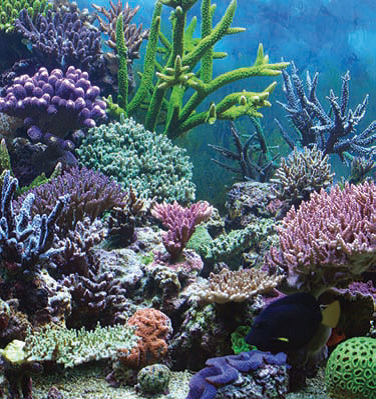

علم الكيمياء

تاريخ الكيمياء والعلماء المشاهير

التحاضير والتجارب الكيميائية

المخاطر والوقاية في الكيمياء

اخرى

مقالات متنوعة في علم الكيمياء

كيمياء عامة


الكيمياء التحليلية

مواضيع عامة في الكيمياء التحليلية

التحليل النوعي والكمي

التحليل الآلي (الطيفي)

طرق الفصل والتنقية


الكيمياء الحياتية

مواضيع عامة في الكيمياء الحياتية

الكاربوهيدرات

الاحماض الامينية والبروتينات

الانزيمات

الدهون

الاحماض النووية

الفيتامينات والمرافقات الانزيمية

الهرمونات


الكيمياء العضوية

مواضيع عامة في الكيمياء العضوية

الهايدروكاربونات

المركبات الوسطية وميكانيكيات التفاعلات العضوية

التشخيص العضوي

تجارب وتفاعلات في الكيمياء العضوية


الكيمياء الفيزيائية

مواضيع عامة في الكيمياء الفيزيائية

الكيمياء الحرارية

حركية التفاعلات الكيميائية

الكيمياء الكهربائية


الكيمياء اللاعضوية

مواضيع عامة في الكيمياء اللاعضوية

الجدول الدوري وخواص العناصر

نظريات التآصر الكيميائي

كيمياء العناصر الانتقالية ومركباتها المعقدة


مواضيع اخرى في الكيمياء

كيمياء النانو

الكيمياء السريرية

الكيمياء الطبية والدوائية

كيمياء الاغذية والنواتج الطبيعية

الكيمياء الجنائية


الكيمياء الصناعية

البترو كيمياويات

الكيمياء الخضراء

كيمياء البيئة

كيمياء البوليمرات

مواضيع عامة في الكيمياء الصناعية

الكيمياء الاشعاعية والنووية
Naturally Occurring Organohalides
المؤلف:
John McMurry
المصدر:
Organic Chemistry
الجزء والصفحة:
9th. p 305
28-5-2017
4103
Naturally Occurring Organohalides
As recently as 1970, only about 30 naturally occurring organohalides were known. It was simply assumed that chloroform, halogenated phenols, chlorinated aromatic compounds called PCBs, and other such substances found in the environment were industrial pollutants. Now, about half a century later, the situation is quite different. More than 5000 organohalides have been found to occur naturally, and tens of thousands more surely exist. From a simple compound like chloromethane to an extremely complex one like the antibiotic vancomycin, a remarkably diverse range of organohalides exists in plants, bacteria, and animals. Many even have valuable physiological activity. The pentahalogenated alkene halomon, for instance, has been isolated from the red alga Portieria hornemannii and found to have anticancer activity against several human tumor cell lines.

Some naturally occurring organohalides are produced in massive quantities. Forest fires, volcanoes, and marine kelp release up to 5 million tons of CH3Cl per year, for example, while annual industrial emissions total about 26,000 tons. Termites are thought to release as much as 108 kg of chloroform per year. A detailed examination of the Okinawan acorn worm Ptychodera flava found that the 64 million worms living in a 1 km2 study area excreted nearly 8000 pounds per year of bromophenols and bromoindoles, compounds previously thought to be non-natural pollutants. Why do organisms produce organohalides, many of which are undoubtedly toxic? The answer seems to be that many organisms use organohalogen compounds for self-defense, either as feeding deterrents, irritants to predators, or natural pesticides.
Marine sponges, coral, and sea hares, for example, release foultasting organohalides that deter fish, starfish, and other predators. Even humans appear to produce halogenated compounds as part of their defense against infection. The human immune system contains a peroxidase enzyme capable of carrying out halogenation reactions on fungi and bacteria, thereby killing the pathogen. And most remarkable of all, even free chlorine—Cl2— has been found to be present in humans. Much remains to be learned—only a few hundred of the more than 500,000 known species of marine organisms have been examined—but it is clear that organohalides are an integral part of the world around us.

 الاكثر قراءة في مواضيع عامة في الكيمياء العضوية
الاكثر قراءة في مواضيع عامة في الكيمياء العضوية
 اخر الاخبار
اخر الاخبار
اخبار العتبة العباسية المقدسة

الآخبار الصحية















 قسم الشؤون الفكرية يصدر كتاباً يوثق تاريخ السدانة في العتبة العباسية المقدسة
قسم الشؤون الفكرية يصدر كتاباً يوثق تاريخ السدانة في العتبة العباسية المقدسة "المهمة".. إصدار قصصي يوثّق القصص الفائزة في مسابقة فتوى الدفاع المقدسة للقصة القصيرة
"المهمة".. إصدار قصصي يوثّق القصص الفائزة في مسابقة فتوى الدفاع المقدسة للقصة القصيرة (نوافذ).. إصدار أدبي يوثق القصص الفائزة في مسابقة الإمام العسكري (عليه السلام)
(نوافذ).. إصدار أدبي يوثق القصص الفائزة في مسابقة الإمام العسكري (عليه السلام)


















